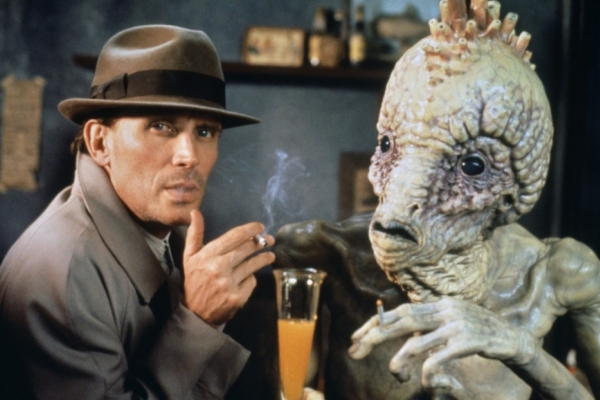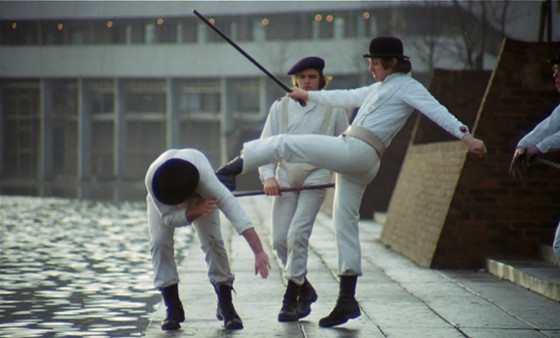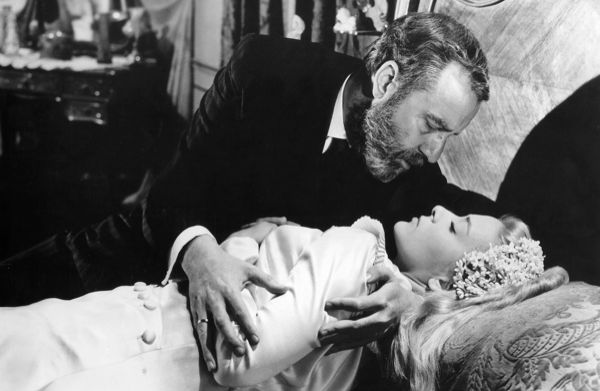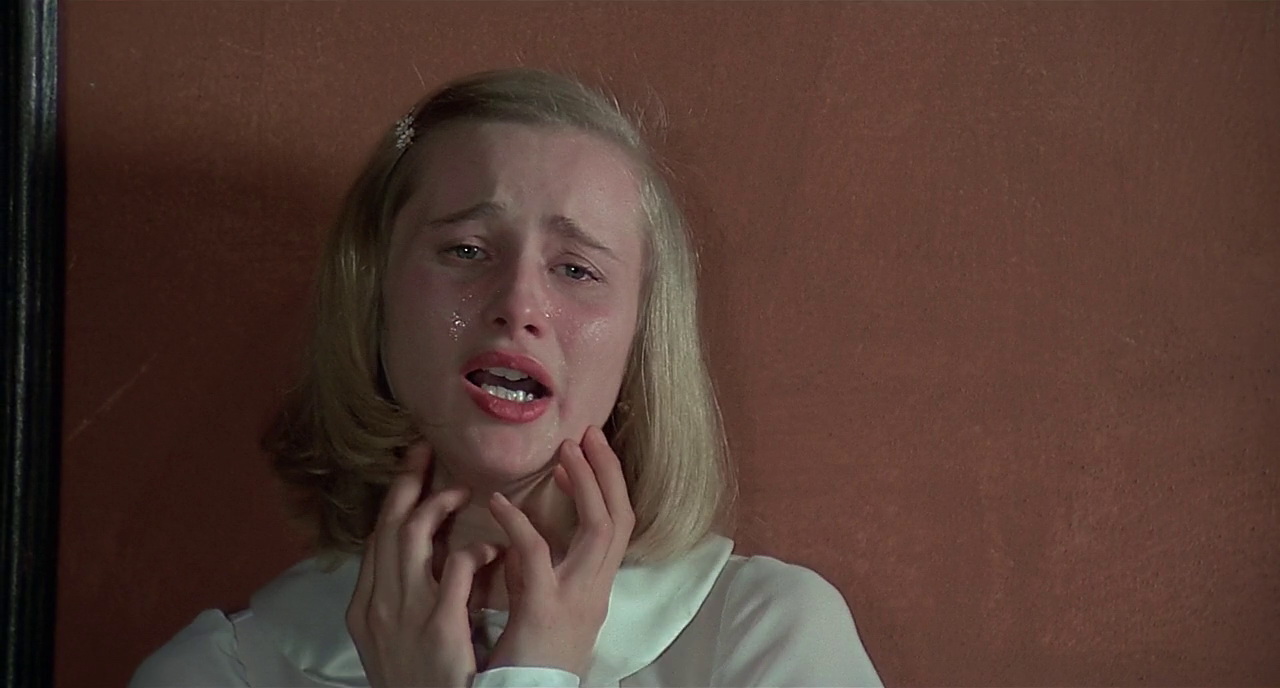5. Happiness (1998)

In his 1998 meandering in a heavy grey sky that covers a place sparsely inhabited by lonely, disoriented souls, Todd Solondz indeed attempts an observation of this transparent and volatile curio that for some humans is ‒or could be‒ happiness. The basis of this ironically grim film is rooted in a tenuous soil, where a homogenous blend of principal necessities and moral integrity fails to be completed, and thus, a fluid adaptation in a geometrically confined society falls fiat.
In a common American environment, a scattered desperation is reflected on the ethical deviations of various characters that are often considered and treated as outsiders in modern societies. In a vain search for happiness, all of them represent the ones among us who haven’t been really loved, they weren’t taught how to do so, and accordingly, they seek love in the wrong places.
“Happiness,” the most representative piece of the New Geek Cinema, balances somewhere in between a bleak dramatic aspect of reality and a comical rejection of social standards. In his overbold observation through keyholes and abolished walls, Solondz’s eyes caress wounds, accept diversities, and essentially, count the ordinary self-made borders that define neighboring spaces of still loneliness.
4. Naked Lunch (1991)

David Cronenberg’s “body horror” films comprise a quit controversial chapter of the American cinema. Audiences are diversely affected by its otherworldly expositions of inherent fears, while film critics have adopted varied attitudes towards Cronenberg’s unfamiliar intelligence.
His 1991 nightmare of “Naked Lunch” perhaps involves the most disturbing imagery in his entire filmography. Nevertheless, it still is one his most intelligent, poetic, and simultaneously awakening works. In the disfigured reflections that constantly appear across the story’s really, the great Canadian director has captures the entirety of his hero’s conscience.
Always evolving in another agonizing Kafkaesque universe, Bill Lee’s surreal adventures within a dark abyss of mental instability represent three basic thematic poles, those of addiction, repressed sexuality, and writing as a means of escaping reality. As Bill becomes addicted to a substance that kills insects (because we should never forget Kafka’s grim fantasy) he sinks into his writing through a rough cerebral portal, seeking a late acceptance of his homosexual preferences.
His mind’s monsters are there: in his psyche, in his world, and even in ours. Their descriptive ugliness is sometimes more than disturbing, and sometimes more than soothing, defusing inner thoughts and realizations that we once hid in the most wet and dark chamber of our soul.
3. A Clockwork Orange (1971)

The twofold insanity of Stanley Kubrick’s Sci-Fi classic “A Clockwork Orange” represents the most controversial and divisive piece of his work. Even currently, more than 40 years since its release, Malcolm McDowell’s uncontrollable brutality and subsequent experimental mistreatment have lost none of their power to shock, unsettle and divide.
Created in the very early period of the 70s, the both real and surreal circumstances of “A Clockwork Orange” seemed to be deeply aware of the future, in a way that elicited a form of abrupt denial back then and a form of an unconscious disgust nowadays. In its raging brutality and socio-political prophetic criticism, this Kubrick’s masterpiece is definitely still ahead of our times.
A fruit produced and matured in the holy territories of an unparalleled artistic intelligence, this exceptional piece of the seventh art wasn’t created so as to satisfy the arrogant tastes that react toward artworks that aim to scratch one’s sentience. Yes, its disturbing pictures are eternally saved in the viewer’s memory, as it does its all-important thematic landscape.
2. Viridiana (1961)

Banned in Franco’s Spain, Luis Buñuel’s “Viridiana” is probably the most sentimentally and morally disturbing piece among his socially criticizing and questioning works. Substantially disputing Christianity, as regards its strict moral principles and mundane application by the clergy, Viridiana’s nightmarish stay in her uncle’s house socked the Catholic Church upon its release, whereas it still evokes a bitter taste in ever viewer’s mouth.
Viridiana is a nun at the verge of taking her vows. After visiting her only relative, a longtime widowed and lonely man, she is convinced that he raped her, and hence she needs to quit her plans of a dedicated life.
Subsequently, Viridiana’s religious orientation of mind leads her to host marginal people in her uncle’s house, but instead of approaching an inner purification, the traumatizing cohabitation with her guests results in a strong inner disputation of her own religion and principle.
In this case, Buñuel steers clear from his surrealist character, making straightforward and severe comments on a dominating status that in interwoven with an old yet vibrant fraud. Perhaps the fundamental content of the films isn’t that shocking these days as it was in the 60s. However, the dark colors with which the legendary Spanish filmmaker draws humanity’s portrait are painful to behold.
1. Salò, or the 120 Days of Sodom

No other film could replace Pier Paolo Pasolini’s “Salò, or the 120 Days of Sodom” at the top of this list. The climactic extravaganza of this unforgettable work is simultaneously one of the most masterful and one of the most disturbing pieces of the seventh art. Occurring in the mind and sculpted in the hands of the Marxist, the activist and the pioneering artist of his era’s cinema, “Salò” will always disturb through its visual rawness and its substantial honesty.
Pasolini’s young and innocent children enter an occupied land, where they are meant to bear every possible martyrdom, from sexual harassment to terminating physical misuse. These children of nature fall in the fiendish hands that staged an abusive reality before their occurrence in this world. They all came, saw, suffered and left before changing a thing.
Aren’t we these children? Haven’t we been found on a vast terrain where hands move us and use our strengths despite our wills and aspiration? It’s really hard to face the allegoric violence of “Salò” and really easy to recognize its reflection on reality. Perhaps this is the reason behind this piece’s everlasting influence.